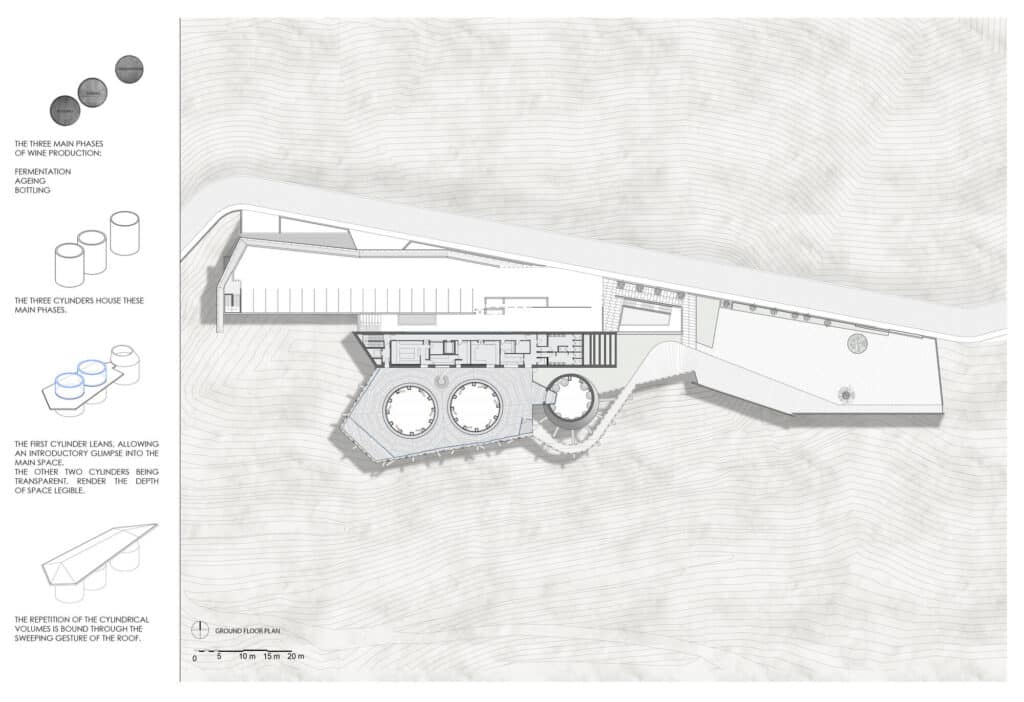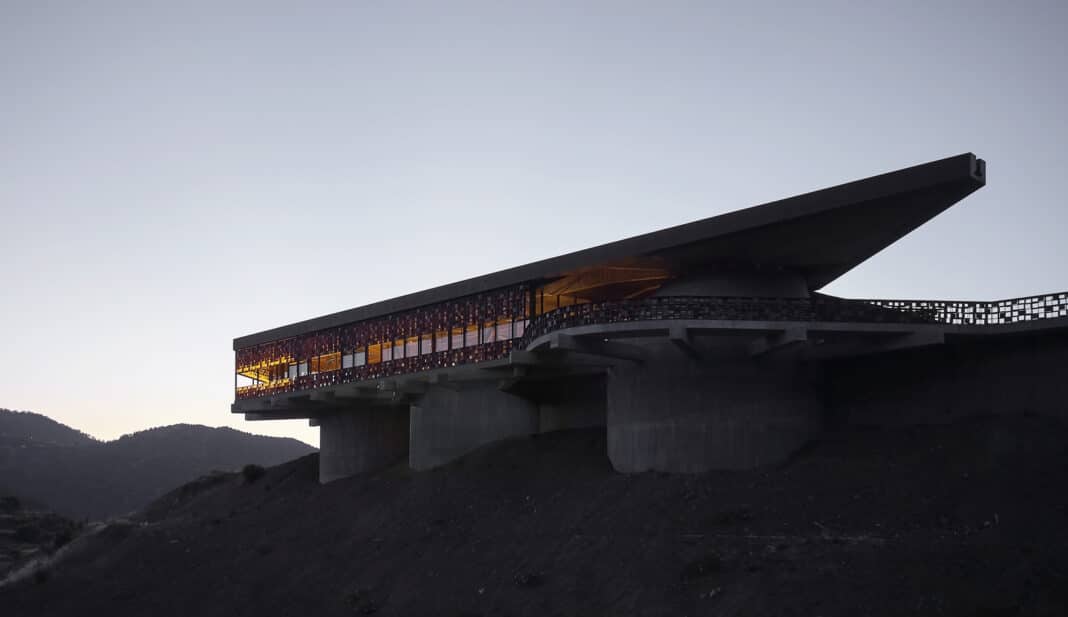Perched on a mountain top above the village of Kalopanagiotis in Cyprus lies the Lampadistis wine distillery, which pays tribute to the island’s wine-making roots that were planted almost 6000 years ago.
Designed by Eraclis Papachristou Architects and constructed over five years, the project takes inspiration from three churches in the St. John the Baptist Monastery, a UNESCO World Heritage site nearby.

The oldest of the churches is Agios Irakleidos, with its construction dating back to the 11th century.
Design Intent
The distillery’s design is significantly influenced by the structure of St. Ioannis Lampadistis, a 17th century church and the distillery’s namesake, which not only lent its name but also several of its architectural features to the winery – specifically its

The design, which in 2022 was awarded the Cyrus Architecture State Prize, is inspired by the monastery; the arrangement of the churches and its stone-based central halls mirrors the three production areas spread across the winery.
These represent the three phases of wine production and housed under a single roof.

With foundations and a structural design of ‘béton brut’ or raw concrete, its overall shape is more akin to the monolithic structures of antiquity than the churches of a rural medieval village.
Nonetheless, it utilises traditional stonework in the balustrade which is easily visible from all aspects of the winery.
Reclaimed timbers featured throughout interior
Whilst much of the coverage has focused on how the 4700 sq m project complements the UNESCO site, the use of reclaimed timbers in its interior also deserves attention.

The timber, which was salvaged from a forest fire several years ago, has been used to create a stunning giant geometric circular ceiling, creating the centrepiece of the building.
According to the architects, the massive ceiling, defined by strong geometries that rotate about the three core drums (where the stages of wine production are housed) are in reclaimed timbers that survived massive forest fire several years ago.

Climate change and timber
In 2021 Cyprus experienced its worst forest fire in decades – a natural disaster attributed to climate change.
That fire was unrelated to forest fire above, which the architect attributes to the impacts of climate change.
According to COP27, the most important way to confront climate change is to look at embodied carbon in buildings and construction – one of the greatest emitters – and timber, as a carbon neutral material.
Reclaimed timber or salvaged wood is essentially timber that has been recovered from a natural disaster and has been given a second chance at life.
And in the case of the Lampadistis wine distillery, the timbers will be enjoyed for many years to come.






